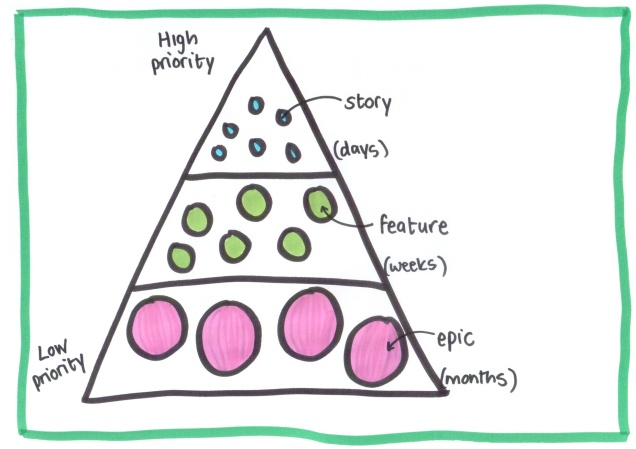
Backlog grooming is an activity many agile teams perform each sprint. This is the process of adding detail, estimates, and order of priority to items in the Backlog. This is an ongoing process in which the Product Owner and the Team collaborate on the details of Product Backlog items. During Product Backlog refinement, items are reviewed and revised. The Product owner is responsible for having stories ready for grooming, and the Scrum Master is responsible for making sure the stories are groomed before sprint planning (via backlog grooming).
What is Backlog Grooming?
- Removing user stories that are no longer relevant or needed
- Re-assessing the relative priority of stories based on emerging information
- Applying estimates to stories which have yet to be estimated
- Correcting estimates based on newly discovered information
- Creating new user stories in response to newly discovered needs by the team, product owner, or customers
- Splitting user stories which are high priority but too large to fit in an upcoming sprint
Grooming will allow for:
- A better understanding of user stories
- Identification of dependencies and potential gaps for stories
- User Story estimation for upcoming and future sprints
Product Owner’s Role
The Product Owner’s role in backlog grooming should start before the actual meeting. The PO will need to make sure that the stories are already prioritized. This is vital to making sure the team’s time is used to groom the most important items first. The PO should also add acceptance criteria or user acceptance test cases to stories as appropriate, depending on how soon each story will be pulled into a sprint. Backlog grooming should not be done without the PO.
Scrum Master’s Role
For this project The Scrum Master will schedule the meeting and take care of any other logistics. The Scrum Master should also be in contact with the PO before the grooming session to make sure the stories are ready to be groomed. Backlog grooming can be done without the SM.
The Team’s Role
Having the team involved with grooming is imperative. While the PO has a great deal of the content identified up front, the team can help round out the technical aspects, dependencies, and other considerations. With the team’s help, the acceptance criteria can be modified and expounded upon. If the team has the ability to even briefly review the top upcoming items, its ideal.
What’s the potential impact of not having backlog grooming?
- Your stories will not be prepared for sprint planning.
- The connection of work items to big-picture vision will grow stale.
- A dev may be looking or hearing about a story for the first time as they are having it assigned during sprint planning. This typically can increase ramp up time.
Who Should Attend Grooming Session(s)
- Pre-Grooming: Discipline Leads (UX/Component), Product Owner, Scrum Master (OPTIONAL)
- Grooming: Same audience as above and including all Dev members and the QA teams.
Just Getting Started?
For the initial 1-2 sprints it’s suggested that both Pre-Grooming and Grooming sessions take place. Cadence and details below:
Pre-Backlog Grooming
(Optional but highly recommended during early stages): A more focused group review to prepare stories for the full team grooming sessions. Goals:
- Review story scope
- Identify blockers and agree on an plan of action to unblock items
- Ensure the stories contain the minimum needed information to the team to be able to discuss and estimate.
Pre-Requisite: Product Owner has reviewed stories for Pre-Grooming and they are ready for review.
Timebox: Try to have 30-60 min planned each sprint for pre-grooming .
Backlog Grooming
A collaborative discussion and elaboration of user story details and estimates. All stories on the agenda won’t always be estimated as some will require additional discussion / decisions. Goals:
- Stories should be understood by all members of the team
- Blockers should be closed or workable
- Stories should be ready for sprint placement
Pre-Requisite: Product owner has reviewed stories for Grooming and they are ready for review.
Timebox: Try to have 1-2 hours planned each sprint for grooming. For teams that are new to this you may want to plan for 2 hours and finish early if you get through everything.
Back To Basics
After your backlog begins to take on a level of refinement, you may find that it’s no longer necessary to have two separate backlog grooming meetings. A great indicator for determining this would be to ask the following question: “Are all of the stories for the next two sprints containing enough detail that the entire team attend grooming without wasting time?”
Questions?
If you made it this far, you’ve consumed a lot of information. Feel free to comment with questions or some suggestions you might have.
